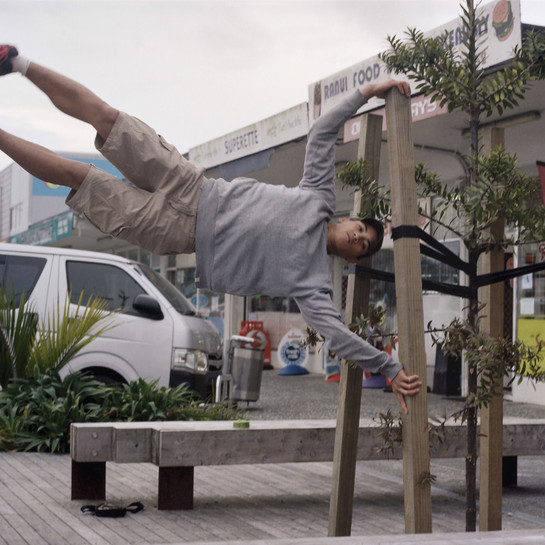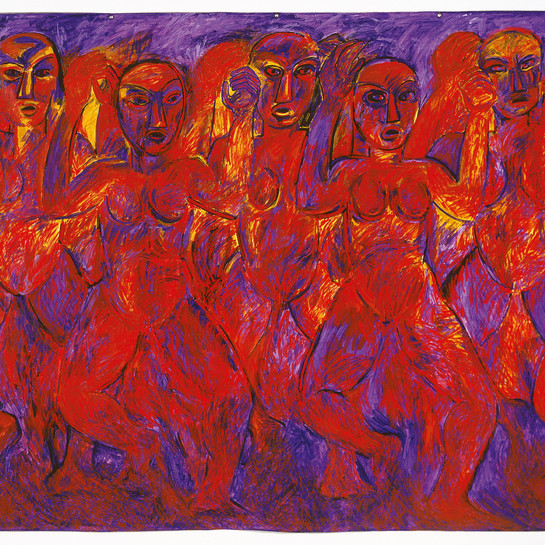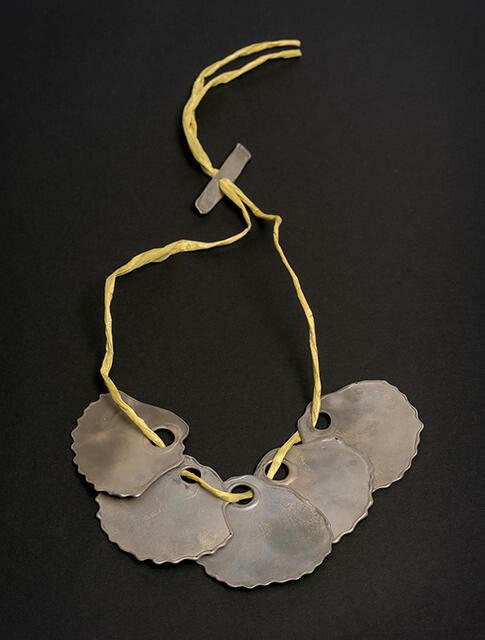Areta Wilkinson
Aotearoa New Zealand, b.1969
Kāi Tahu,
Māori
Hei Tupa
- 2013
- Oxidised sterling silver, polyester
- Purchased 2016
- 2016/057
Tags: jewelry, scalloping
Areta Wilkinson combines her contemporary jewellery practice anchored in an awareness of the body with traditional Māori systems of knowledge, in which objects are often used to make connections between people and to convey stories. Previously she has made works that relate to the taonga whakarākei (personal adornments) of her Waitaha, Kāti Māmoe and Ngāi Tahu ancestors. “These works do not seek to replicate an existing image of the world”, she has said, “but instead alert me to a new way of seeing from the world in which I stand, whilst still maintaining a relationship with the past.”
Hei Tupa is a contemporary take on a tupa, or scallop shell, necklace from Rāpaki near Ōtautahi Christchurch. In making this work, Areta asserts the role of Ngāi Tahu tūpuna as the first artists working in the region.
(Perilous: Unheard Stories from the Collection, 6 August 2022- )
Exhibition History
We do this, 12 May 2018 - 26 May 2019
Some contemporary artists incorporate the latest technologies in their works; others, like Areta Wilkinson, offer new perspectives on traditional forms. Wilkinson combines a contemporary jewellery practice anchored in an awareness of the body with traditional Māori systems of knowledge, in which objects are often used to mediate connections between people, and with the wider world. Recently, she has made works that relate to the taonga whakarākei (personal adornments) of her Waitaha, Ngāti Mamoe and Kāi Tahu ancestors. “These new works do not seek to replicate an existing image of the world”, she has said, “but instead alert me to a new way of seeing from the world in which I stand, whilst still maintaining a relationship with the past.” Directly relating to a shell necklace from Rāpaki near Christchurch, this necklace of tupa, or scallop shell, asserts the role of Kāi Tahu tūpuna as the first artists working in the region”.
(We do this, 12 May 2018 - 26 May 2019)


